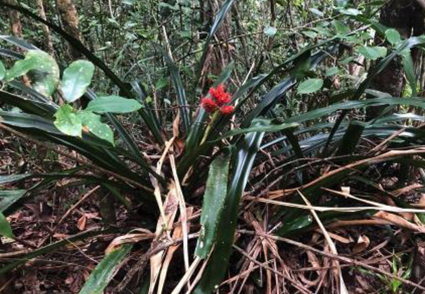Abstract
We here establish the Hohenbergia capitata complex composed of three species endemic to the Atlantic Forest, in the State of Bahia, Northeastern Brazil. When compared with other Hohenbergia species endemic to the Atlantic Forest, the complex is recognized by the small size of the plants (shorter than 1 m tall when flowering), lanceolate leaf blades, inflorescence with main axis short and congested branches, concentrated on the apical portion of the inflorescence (creating a capitulate shape), primary branches short pedunculate (short stipes), basal primary bracts sub-orbicular, large flowers (over 3 cm long) with spatulate petals with a cuspidate apex. Within this complex, we describe H. nidularioides sp. nov., a critically endangered species from the southern coastal region of Bahia, only known from a small fragment of Restinga forest in Una municipality. This species is very similar to H. capitata but differs by the nidular aspect of the inflorescence, which is only short-pedunculate and more or less hidden inside the rosette. In addition to the taxonomic treatment, we provide illustrations, the geographic distribution, taxonomic comments, and anatomical comparison of the species in the H. capitata complex.
References
We here establish the Hohenbergia capitata complex composed of three species endemic to the Atlantic Forest, in the State of Bahia, Northeastern Brazil. When compared with other Hohenbergia species endemic to the Atlantic Forest, the complex is recognized by the small size of the plants (shorter than 1 m tall when flowering), lanceolate leaf blades, inflorescence with main axis short and congested branches, concentrated on the apical portion of the inflorescence (creating a capitulate shape), primary branches short pedunculate (short stipes), basal primary bracts sub-orbicular, large flowers (over 3 cm long) with spatulate petals with a cuspidate apex. Within this complex, we describe H. nidularioides sp. nov., a critically endangered species from the southern coastal region of Bahia, only known from a small fragment of Restinga forest in Una municipality. This species is very similar to H. capitata but differs by the nidular aspect of the inflorescence, which is only short-pedunculate and more or less hidden inside the rosette. In addition to the taxonomic treatment, we provide illustrations, the geographic distribution, taxonomic comments, and anatomical comparison of the species in the H. capitata complex.


